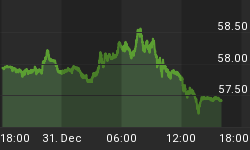
The Bullish Trifecta Fed Statement
- Reduce monthly bond purchases by $10B.
- Future tapering decisions will be data dependent.
- Pledge to keep interest rates low for an extended period.
Small Taper Better Than No Taper
In terms of the impact on the financial markets, the closer this week's Fed statement comes to meeting market expectations, the better for the stock market bulls. The market believes the Fed is tapering based on improving economic conditions. If the Fed decides to go with a no-taper statement, the markets may begin to wonder about the economy's health. A larger than expected taper, could send a "QE is ending and it is ending sooner rather than later" signal, which could cause many to hit the sell button. From The Wall Street Journal:

Many analysts predict the Fed will reduce its monthly bond purchases by a small amount. After months of market volatility reflecting uncertainty about the program's fate, officials want to avoid surprises. So they could decide to follow the market's lead and pull back a little, though there are still likely to be people in the room arguing to wait a bit longer for evidence of a stronger economy. Some Fed officials have floated the idea of making a small reduction -- say $10 billion -- to signal they are moving tentatively and cautiously. A reduction of $20 billion would be bigger than many investors are expecting and a sign the Fed has become slightly more confident about the economy.
"Evaluating" Means Data Dependent

The markets have grown accustomed to the Fed's safety net. Investors want to hear that any further reduction in the Fed's bond-buying program will be based on how the economic data evolves over the coming months. If the Fed hints at or states any future decisions will be based on incoming data, rather than a preset schedule, the markets should take a "they still have our back" stance. Conversely, if the market perceives the tapering schedule is on a preset course, then a risk-off reaction may be what follows Wednesday's formal FOMC statement. From The Wall Street Journal:
Officials could hint that a quick second reduction at their late October meeting is unlikely because they want time to assess the economy's performance before taking the next step. Terms like "patience" could be signals that they will move slowly and carefully. Several officials have used the term lately, and it came up in the minutes to their last policy meeting: "A few members emphasized the importance of being patient and evaluating additional information on the economy before deciding on any changes to the pace of asset purchases."
Committed To Low Rates

As we noted on September 7, the Fed's course of action is always well-planned in advance. The clear message since the late May utterance of "tapering" from Chairman Bernanke's lips has been, we plan to taper, but we also plan to keep interest rates low for an extended period. The opening paragraph in today's Reuters article continues to hammer home the same message:
The U.S. Federal Reserve is expected to begin its long retreat from ultra-easy monetary policy on Wednesday by announcing a small reduction in its bond buying, while stressing that interest rates will remain near zero for a long time to come.
Investment Implications
If the Fed throws the markets a softball by erring on the side of meeting current expectations, markets should react in a fairly tame or bullish fashion. If the Fed strays from the bullish trifecta script, surprises in their policy statement could be met with a rather rude reaction. The Fed is already concerned about how fast interest rates have risen since late May. It seems unlikely Wednesday's statement would rock the interest rate boat.

Our market model, which monitors the market's risk tolerance, continues to give the bulls the nod in about 80% of bull/bear tests. The bulls remain in control, which means something has to change for the bears. We will not anticipate how the markets will react to the Fed. We need to see observable evidence that supports a shift toward risk-off. Until something changes, we plan to maintain our present course, which includes exposure to U.S. (VTI) and foreign stocks (EFA).
















